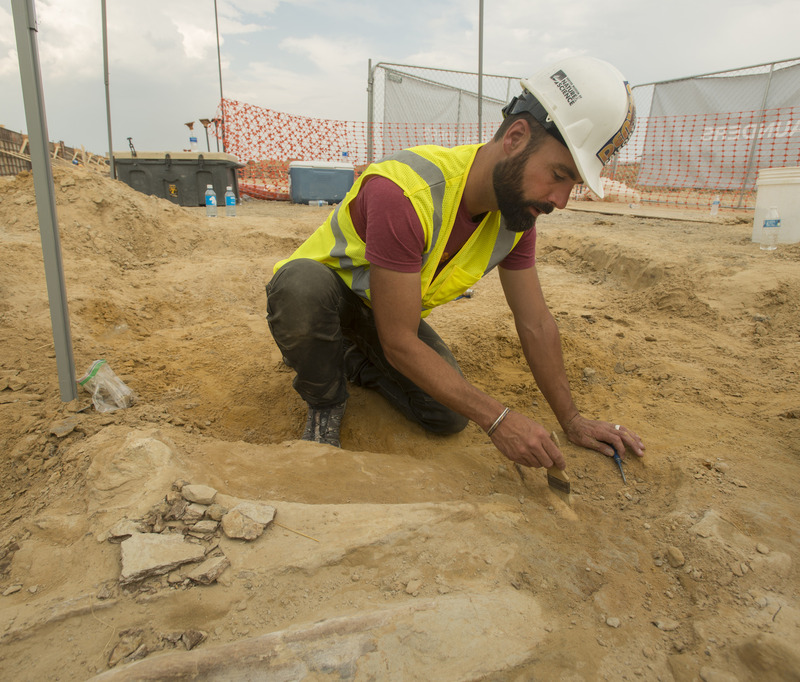The Local newsletter is your free, daily guide to life in Colorado. For locals, by locals.
On August 25, an equipment operator drilling holes at a Thornton construction site struck something odd with his machine. Knowing it wasn’t rock, the Saunders Construction worker called experts to the scene, who ultimately identified the horn of an approximately 66 million-year-old triceratops dinosaur.
“I give them credit for even realizing it was a fossil,” says Dr. Joe Sertich, dinosaur curator at the Denver Museum of Nature and Science. Sertich, who is overseeing the recovery of the rare dinosaur bones, says that based on what he has found this week, “This one has the potential to be one of the more complete skeletons,” ever found in the Denver area. “It’s getting close, if it’s not already the most complete.”

(Read more about Dr. Joe Sertich)
Nearly a week after the surprising discovery, Sertich’s team has uncovered the dinosaur’s second horn, parts of the skull and jaw, several ribs, and some of the vertebra from its tail. In addition to the larger bones already identified, his team is beginning to find smaller bones—like toes—which makes Sertich “optimistic that quite a bit of the skeleton could be there.” If a complete triceratops is unearthed from the dig site, the remains might weigh as much as 10,000 pounds, Sertich says.
It’s not uncommon that dinosaur bones are found in the metro area. The Denver Basin, which stretches from Colorado Springs to Wyoming, contains rock, sand, and mud that came off the early Rocky Mountains and buried remains of dinosaurs that roamed the Front Range more than 66 million years ago, Sertich says. And over the past 30 years, he says, “quite a few bones have come out,” including triceratops bones found in Lakewood, Arvada, Greeley, Fort Collins, and Brighton. But according to Sertich, “It’s pretty unusual to get full skeletons.”
Complete skeletons are rarely found near cities, partly because concrete has been laid atop most of the area’s fossils. If more of the earth was exposed, Sertich says, “I think this would be one of the richest dinosaur areas anywhere in the world.”
Because of the completeness of this most recent find, Sertich thinks there will be much to learn from the discovery. “This one can tell us a lot about the way dinosaurs here lived and the ecology of the area,” he says. “We can learn a lot about not only this particular dinosaur, but the landscape around Thornton 66 million years ago.”
The bones were found at the site of a future public safety facility that will used by the police and fire departments in Thornton. Sertich and his team are now working with the City of Thornton and Saunders Construction to recover the bones efficiently and responsibly. Sertich expects that most of the bones will be recovered by the end of the week and that the entire dig will be finished within two weeks. Once the bones are recovered, they will be transferred to a preparation lab at the Denver Museum of Nature and Science and will be on display for the public.








